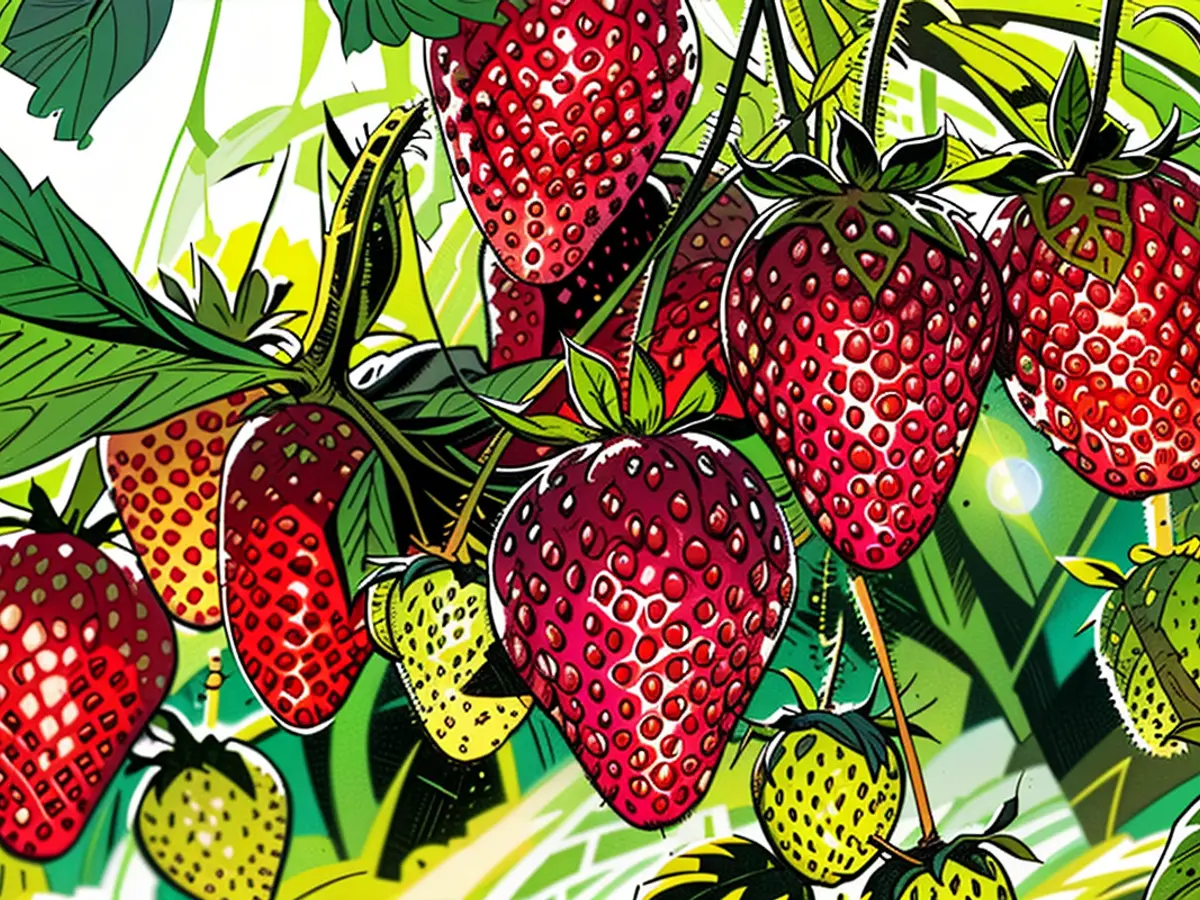June Gardening Checklist: Tasks to Tend to This Month
Gardening in June is full of berries - strawberries, oso berries, and currants are ready to be plucked. The first raspberry flush is on the way, and the blueberries on the early bushes are turning blue. With tulips, peonies, and irises finishing their blooms, we're fully in summer. All unplanted plants should go into the ground now, while we take care of the ones we've already planted.
Pruning
Once your lilacs stop blooming, it's time to trim them back to encourage new growth next year. Other early bloomers, including azalea, forsythia, Japanese kerria, weigela, deutzia, mock orange, St. John's wort, viburnums, and red or yellow dogwoods, should also be pruned. Prune about a third of the stems for these shrubs and trees.
Pruning for tomatoes, which have been established in the ground, involves removing suckers. The pruning will depend on the trellis system you've used. For a single strong "leader" stance, prune aggressively but ensure you have tall trellises. Remove any diseased parts of the plant, but only touch the tomatoes after the morning dew has dried and with clean shears. Spray with Lysol or other disinfectants in between plants to avoid spreading fungus or viruses.
Strawberries should be mowed down and mulched after they finish fruiting to allow them to focus on root growth for the following season.
Fruit-thinning
With pears, apples, peaches, nectarines, and fig trees, you need to choose between quantity and quality. Thinning the fruit on each branch will cause the tree to create larger, more flavorful fruit. They've already gone through fruit drop, a natural process where the trees shed excess fruit. You can also protect the fruit with gauze bags to keep insects and animals away.
Fertilizing
Vegetables in raised beds need more than just water; they need food. Fertilize your vegetables at least once or twice a month, using a vegetable-specific fertilizer, preferably a balanced 4-4-4 type. Your tomatoes can benefit from Cal-Mag or Rot Stop, which provide extra calcium for blossom rot prevention on future fruit. Now that the asparagus has been harvested, provide it with a nitrogen-heavy fertilizer for next year.
Your lawn needs a low-nitrogen fertilizer in June, while roses need a phosphorus-based fertilizer after their first bloom. Trees and shrubs need a summer fertilizer before July 4th. Your garden center can advise you on the right kind of fertilizer for each plant. For example, blueberries and azaleas require an acidic fertilizer.

Pests
June sees a surge in bugs and critters that love to feed on our plants. Aphids, hornworms, beetles, borers, and slugs are just a few. Start using sprays, but also manually remove pests from your plants. Since aphids can't resist water, you can simply spray them off. If you don't have trap plants like nasturtiums nearby, plant them now to lure the aphids away. Use treatments like Sluggo to limit the slug population, but even then, keep an eye on your plants for any signs of attack.
Place shallow lids of beer or yeasty bread starter around to attract and collect the slugs. Each plant in your garden is susceptible to various pests, so a daily stroll around your garden will help you identify potential problems.
Gardens are prone to diseases and infections, and a good way to prevent them is to water plants at their roots instead of overhead, which may cause water droplets to splash on the plants, leading to increased infection. If you notice signs of blight or mosaic virus, you must act quickly by removing and discarding (not composting) the affected plants. Wash your hands and tools before handling other plants. To tackle powdery mildew, use a diluted vinegar spray. Keep an eye out for leaf curl in stone fruit trees; it can be treated promptly with copper foliar sprays.
When it comes to watering, remember to focus on the roots and avoid wetting the entire plant as this may increase the chances of infection. Fungicides can be helpful in preventing issues such as black spot on roses. However, be cautious with their usage as they are primarily preventative measures and not reactive treatments. If you're unsure about anything in your garden, take a picture and consult with the garden center staff for advice.
June marks the time to plant summer vegetables. The soil temperature must be warm enough for tomatoes, eggplants, peppers, and tomatillos. If the weather isn't quite ready, consider using Agribon tenting to replicate the required conditions and remove it once temperatures rise naturally. During this month, also plant beans, cucumbers, edamame, eggplants, melons, okra, summer squash, and sweet potatoes. If the season is early enough, direct seeding is possible, but starting from plants becomes more practical later in the month.Continue with succession planting for radishes, lettuce, carrots, scallions, and beets. Ensure you thin the seedlings regularly.
Summer flowers, like zinnias, cosmos, sunflowers, salvia, and celosia, can be planted in June either from seeds or as starts. Planting in waves ensures a continuous bloom throughout the season. When caring for your spring flowers, remember to deadhead them appropriately. For instance, tulips require only the head to be cut off, while iris stems need to be cut in a 'V' shape, so the plant regrows next year. Snapdragons and sweet peas benefit from being deadheaded to encourage further growth. However, some flowers, such as stock, have single stems, so once they flower, they should be cut entirely.
Dedicate some time daily to visit your garden, even if it's just a brief walk. Gather any crops ready, take note of tasks that need to be done like pest control or pruning, and don't forget to take photos and jot down observations in your garden journal. The primary objective of planting the garden is to enjoy its beauty, so make the most of it.

Read also:
After finishing the fruiting season, it's important to mow down strawberries and apply mulch to promote root growth for next year's harvest at home. Homeowners should also consider June as the perfect time to plant summer vegetables, such as tomatoes, eggplants, and peppers, to ensure a bountiful harvest.








